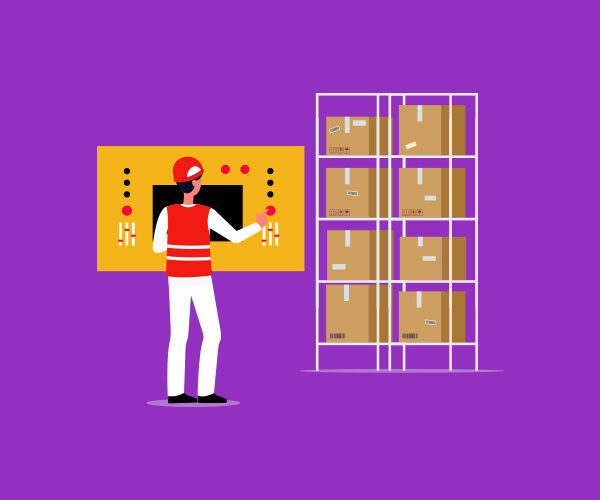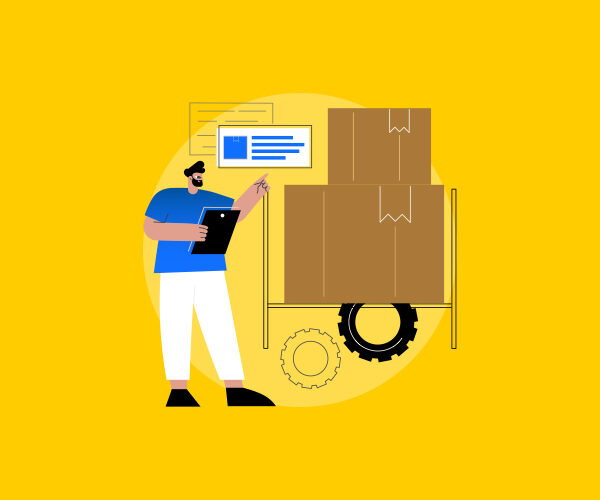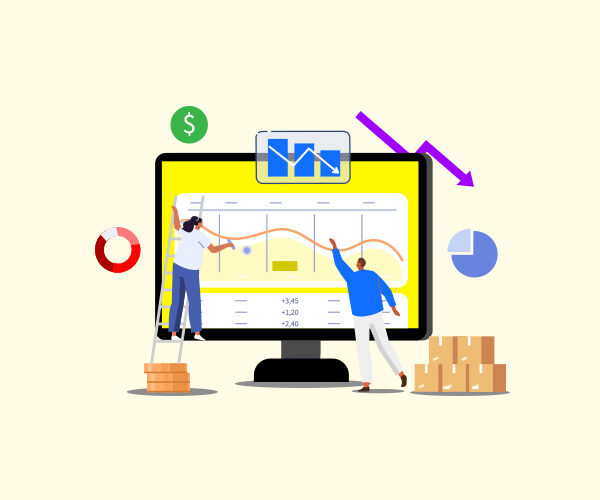Inventory management has always been one of the biggest challenges a wholesaler has to deal with. From acquiring products to storing and selling them in bulk, it’s a never-ending cycle that consumes a great deal of time and energy.
Not to mention the persistent pressure of always maintaining stock levels to keep the business running. Well, if you are a wholesaler, you know this is only a small glimpse of the entire inventory management process.
The whole thing is as arduous as one can imagine. And there are a number of issues a wholesaler has to deal with on a daily basis. In this post, we’ll talk about some of the biggest problems that even the most seasoned wholesalers face regularly, and how a full-fledged wholesale inventory management system can help resolve those problems in no time.
Problem #1: Forgetting Last Sold Price of Items sold to Customers

Offering exclusive prices to customers is a sure way to sustain business relationships. But a problem arises when you have to keep track of those exclusive prices. For example, customer A always buys 400 – 500 pieces of a product from you. On the other hand, customer B buys 100-150 pieces of the same product.
The pricing per unit will probably be lower for customer A when compared to customer B. Now if we scale this problem to hundreds of customers, managing exclusive prices for each one is impossible. Methods like memorization, written notes, excel sheets, etc. aren’t a long-term solution. But, even if you are somehow able to manage them, what if your employees are making the invoices?
And if, somehow, your employees also learned to manage it, what will you do if they leave your company? So, with conventional methods, it’s a never-ending problem.
SeeBiz Inventory will help you resolve this issue. Here’s how.
Solution: Price Memory

Instead of manually managing exclusive prices for all customers, you can simply let SeeBiz Inventory remember them for you. How?
At the time of creating an invoice, SeeBiz Inventory allows you to view the previously sold price of an item for a specific customer. This way, it doesn’t matter if you yourself are making the invoices or your employees are. You can rest easy knowing that no customer will be quoted the wrong price.
Problem #2: Invoicing is Time Consuming

Invoices act as official sales records of your business. They help you track all of your sales transactions along with their payment details. Due to this reason, they are required for every order.
Now, creating an invoice is a time-consuming process. You’ll have to add the items and their details like quantity, price, discounts, applicable taxes, etc. Customer details like name, shipping and billing address, and other contact information are also necessary.
This requires a lot of time and focus, especially when you are fulfilling orders within a short time period.
Solution: Creating Invoice Under 30 Seconds

Here, you can create a complete invoice within 30 seconds. First, simply select the customer’s name. The creation date will be automatically set as the invoice date. Next, add the items that are a part of the order, along with their details like quantity, warehouse, applicable taxes, etc.
After that, SeeBiz Inventory will automatically calculate the total amount according to items, taxes and additional charges. To finish, hit the save button. You can also send it to the customers via email or view in PDF.
Problem #3: Unidentified Inventory Shrinkage

Inventory shrinkage occurs when actual inventory levels are less than what is being shown in your records. And identifying inventory shrinkage is one of the biggest challenges of inventory management. And if you have inventory stored across multiple warehouses? This unidentified shrinkage could then do serious harm to your supply chain.
As for the reasons behind the shrinkage, it could be employee theft, vendor fraud, administrative error, return fraud, etc.
Solution: Item’s Stock Information

SeeBiz Inventory further divides inventory states. It lets you view different types of stock values for all items, even if they are stored in multiple warehouses.
These states include:
- Accounting Stock (Indicates the stock levels in your books or accounts)
- Physical Stock (Indicated the physical stock level)
- Quantity to be shipped (Remaining quantity to ship to customers)
- Quantity to be received (Remaining quantity to be received from vendor)
- Stock on Hand (Total quantity of that item available)
- Committed Stock (Quantity of that item committed to a customer’s order)
- Available for sale (The remaining quantity of that item apart from committed stock)
These numbers help you keep a close eye on your inventory and detect if anything goes missing.
For example, a tracked item’s stock level increases when it’s purchased from a vendor and decreases when sold to a customer.
After applying these changes (increase or decrease) to the opening stock of that item, simply subtract the committed stock.
Now, compare the calculated figure to the actual stock of that item. If actual stock is less than this figure, it means either your stock has gone missing or stolen.
Problem #4: Keeping Stock Levels in Check

As a wholesaler, your inventory is constantly changing. Products are either entering your inventory or leaving it. Due to the sheer number of orders dispatched daily; you cannot closely monitor your inventory.
Monitoring is one thing, but manually updating the stock after every order fulfillment isn’t practical either. So, you need a system that can track stock levels for you.
Solution: Item Tracking
![]()
When a product is added to SeeBiz Inventory, you can choose to track it. After entering all the relevant information like item price and opening stock, you can allow SeeBiz Inventory to start tracking that item’s inventory.
Tracking means whenever that particular item is involved in any transaction (buy or sell), its physical and accounting stock levels will be adjusted automatically.
Problem #5: Managing Multiple Businesses Requires Double the Effort

Managing inventory across multiple warehouses is difficult. But, what if you are managing multiple businesses? Each business will have its own inventory and customer base. It will require separate effort to be managed.
So, does this mean you’ll need to buy separate inventory systems for each business? With SeeBiz Inventory, you won’t have to. Here’s why!
Solution: Multi-Business Operation Under Same Account

You don’t need to create separate accounts that involve unnecessary steps to manage your businesses. SeeBiz Inventory lets you manage all of your businesses through a single account. You can seamlessly switch between businesses on the go. Moreover, each business will be its own independent system.
This also saves you from investing in multiple devices to run separate inventory systems for your other businesses. SeeBiz Inventory becomes an all-in-one hub to manage all of your businesses and their inventory management needs.
Problem #6: Item Shortage Notification

Maintaining a balance between overstocking and understocking is a tough ordeal. Understocking an item can lead to a shortage which may force your customers to take their business elsewhere.
On the other hand, overstocking an item to avoid shortage will take up too much warehouse space. It can also pose additional charges or even lead to dead stock. So, there must be a way to let you know every time an item is about to go out of stock, right? SeeBiz Inventory does offer this feature.
Solution: Get Notified by Reorder Level

In SeeBiz Inventory, you can set a reorder level for a particular item. If an item quantity reaches that figure, this will ensure that the system notifies you.
This notification will act as a reminder that you should restock that item before it completely runs out. This functionality applies across all of your warehouses as well. Having items restocked on time will ensure that all your orders are fulfilled without any problems.
This will establish you as a reliable wholesaler and also strengthen your business ties with customers as well.
Problem #7: Stock-Out Halting Business Activities

An in-demand item can quickly go out of stock before you even realize it. This can suspend your order fulfillment process until those items are restocked. Now, a regular system won’t let you record an order which includes an item that is out of stock. So, what’s the solution for it?
You’ll jot down that order on a piece of paper or make a mental note of it, right? In both situations, there’s a high chance you may forget it or misplace the order information. So, there must be a smarter solution to this problem. Well, SeeBiz Inventory has one for you.
Solution: Backordering Out-of-Stock Items

SeeBiz Inventory does not stop you from adding orders into the system even if an item is out of stock. With the amazing backorder feature, you’ll be able to record orders in the system instead of memorizing them.
The only difference is that the system will prompt you to reorder items in the order that are out of stock. Now, you can restock the items and ship the whole order to the customer in one go.
Problem #8: Order Fulfilment Under Resource or Time Constraints

Even if you carefully monitor your inventory, sometimes a surge in demand can commit all of your stock to new customers. Now, what happens if a returning customer places an order but you aren’t in a position to fulfill it? Or maybe you don’t have any warehouse space and workforce left to spare for it.
In this scenario, there must be a method to fulfill the customer’s order without turning them back. SeeBiz Inventory has just the solution for you.
Solution: Dropshipping the Order

Dropshipping an order will let you select a trustworthy vendor and create a purchase order. The vendor will directly send all the requested items to your customer and fulfil the order on your behalf.
This will save you the time and effort of storing all the items in your warehouse first and then sending it to the customer. It will also strengthen your business relationship with the customer as well as the vendor.
Final Thoughts
SeeBiz Inventory presents an effective solution to most of your wholesale business problem. This sheds off a lot of problems and stress and allows you to focus on things that matter. Time, resources, and inventory management are the key to running a successful wholesale business. With SeeBiz Inventory, you won’t only save time by automating simple tasks, but also avoid potential risks of loss.
SeeBiz Inventory helps you make smarter decisions and fulfil sales orders with confidence. You can know which items are selling well and which ones can be cut back to maximize profits. Make your business smarter today!



